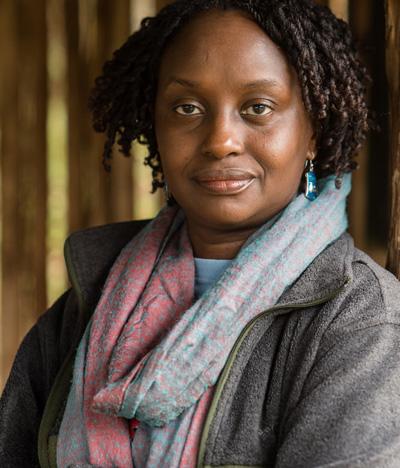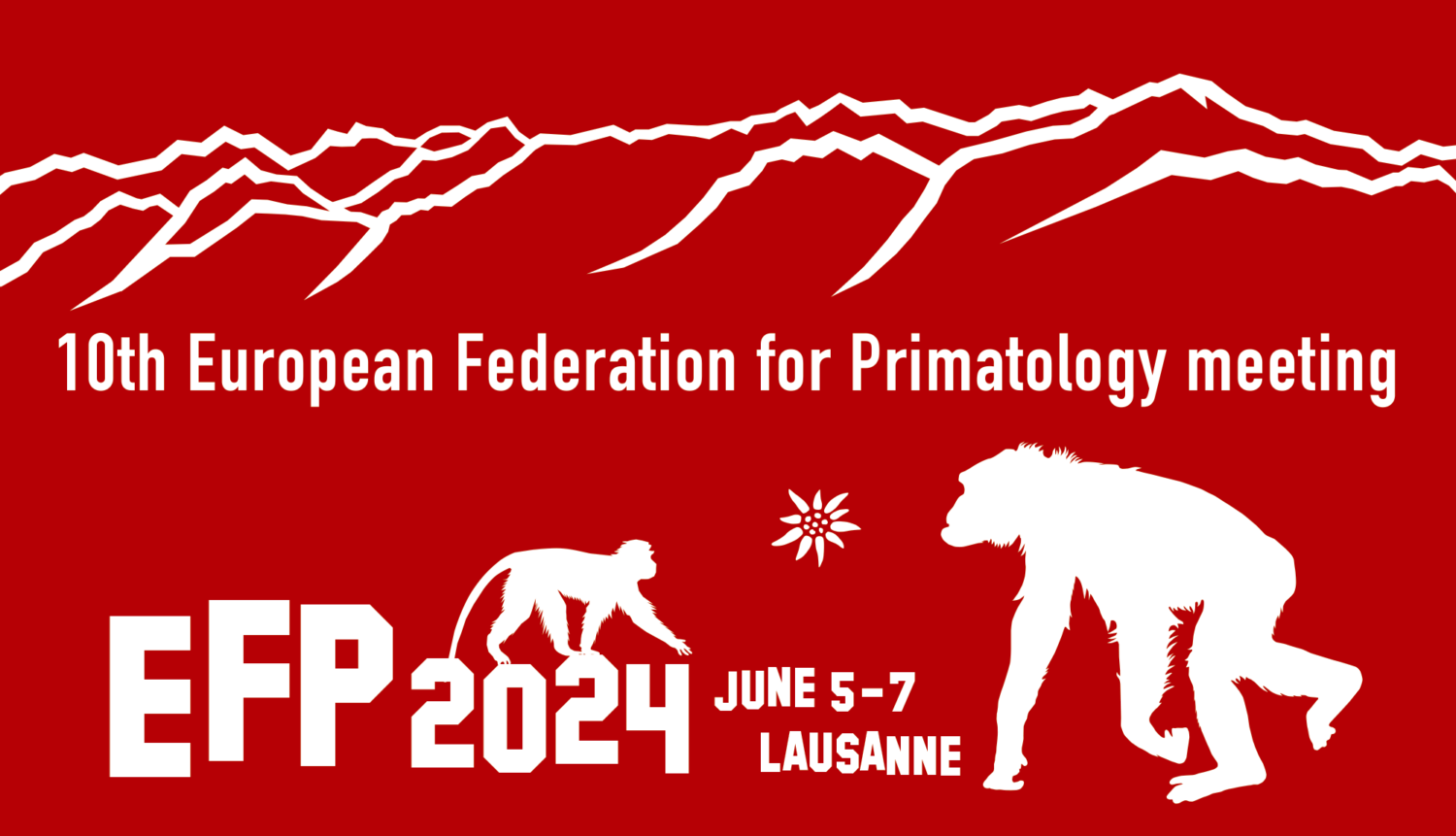
Jenny Tung
Max Planck Institute for Evolutionary Anthropology and Duke University
The social (meta)genome: social structuring of the gut microbiome in a long-term baboon field study
Social relationships have profound effects on primate health, but the mechanisms that explain this relationship are not well understood. One possibility is that social relationships influence transmission of host-associated microbes. Ten years ago, we showed that both social group membership and social network relationships predict the taxonomic structure of the gut microbiome in wild baboons. We therefore suggested that direct physical contact may be important in social transmission of gut microbial species. However, socially structured microbiomes can arise through multiple mechanisms—not only social transmission—and these alternatives remain challenging to disentangle. Strain-resolved metagenomic profiling, which can track sharing of host-associated microbes at the genetic level, may help address this challenge. Here, I will present new findings indicating that strain sharing can indeed recapitulate true transmission networks, but that in complex, ecologically realistic settings, strain sharing is also often driven by other environmental or demographic factors. Consequently, even baboons who never lived at the same time exhibit substantial background strain sharing. These results suggest that repeated longitudinal sampling and careful consideration of other host characteristics will be needed to understand how primate social behaviors shape—and are perhaps shaped by—the microbiome.
Mike Mendl
Bristol Veterinary School, University of Bristol
Assessing animal emotions across taxa: from human primates to non-human primates and beyond

After being taboo for much of last century, the scientific study of animal emotion (affect) is back on the agenda. Interested parties include biologists addressing Tinbergian questions of cause, development, function and evolution, neuroscientists and psychopharmacologists working on mechanisms and animal models of affective disorders, and animal welfare scientists for whom an animal’s emotional state is increasingly accepted as being the key determinant of its welfare. Ultimately, human subjective experiences are the source of our concept of emotion and, for progress to be made in animal studies, these concepts need to be carefully translated. I suggest that a dimensional approach has advantages, particularly given its focus on the key characteristic of emotion – valence (positivity / negativity) – its links to the two evolutionarily ancient imperatives of acquiring resources and avoiding harm, and its applicability across taxa. A major challenge for this and other views is accurate assessment of affective states in other species. Many measures are currently used but these have limitations including limited generalisability across species, not capturing affective valence, and lack of a priori predictions as to how they should change with valence. One approach that addresses these issues is to use decision-making under ambiguity (‘judgement bias’) as a marker of affective valence. Around 200 studies across a range of taxa including humans, non-human primates, other mammals and well beyond – birds, fish, insects – have been carried out. Recent meta-analyses indicate that, as in humans, non-human animals in putative negative affective states tend to make more negative (labelled ‘pessimistic’) judgements about the outcomes of ambiguous signals than those in more positive states. However, there are null and opposite findings that may result from the interplay of different underpinning processes (e.g. outcome valuation and probability estimation) that mediate the links between affect and decision-making under ambiguity. Computational modelling of decision data can offer insights into this possibility. Other factors such as individual (‘personality’) differences in optimistic and pessimistic decision-making may also play a role, for example by moderating responses to experimental manipulations of affect. A better understanding of these influences should enhance the utility of the judgement bias approach which, being translatable across taxa, offers promise in allowing comparative studies that do not require identification and validation of new indicators as one moves from humans to non-human primates and beyond.

Gladys Kalema-Zikusoka
Founder and CEO, Conservation Through Public Health
Walking With Gorillas: Integrating Health and People in Conservation
Conservation Through Public Health (CTPH) is an award-winning Ugandan grassroots NGO and US registered non-profit founded in 2003 that promotes biodiversity conservation by enabling people to co-exist with wildlife through improving animal health, community health and livelihoods in and around Africa’s protected areas and wildlife-rich habitats. Following a fatal scabies disease outbreak in the then critically endangered mountain gorillas that was traced to marginalized human communities living around the protected gorilla habitat, CTPH developed a One Health approach to biodiversity conservation that addresses human, animal and environmental health together.
CTPH’s programs began at Bwindi Impenetrable National Park in Uganda, home to just under half of the world’s mountain gorillas. The One Health model improved community health and contributed to a reduction in human-related morbidity and mortality in gorillas. This model also improved community attitudes to conservation, and led to better protection for gorillas in community land. CTPH built upon this One Health model to mitigate the impact of the COVID-19 pandemic, working with Uganda Wildlife Authority (UWA), NGOs, tour operators and community groups, to prevent transmission of COVID-19 between people and from people to gorillas and improving community livelihoods in the absence of tourism through Gorilla Conservation Coffee – a social enterprise that supports farmers living around habitats with gorillas. Through organic expansion, training and advocacy this model that is addressing 10 out of 17 sustainable development goals, is being expanded to biodiversity hotspots to prevent and better control disease outbreaks, as well as, address climate change.
CTPH is advocating for integrated approaches to achieve a planet in balance through a book – Walking With Gorillas – about Dr Gladys Kalema-Zikusoka’s conservation and leadership journey shaped by One Health
Camille Testard
Department of Molecular and Cellular Biology, Harvard University
Neuroethology of natural social dynamics in rhesus macaques

Social distancing measures implemented to slow the spread of COVID-19 have triggered a worldwide craving for social contact, leading to surges in anxiety and depression. This social desire is deeply rooted in our evolutionary history: most of our closest nonhuman primate relatives live in groups in which they form differentiated relationships with conspecifics. After a devastating hurricane destroyed over 60% of the vegetation on a small Caribbean island, instead of being more competitive, resident rhesus macaques became more tolerant of each other and expanded their social networks. Five years later, monkeys were still more tolerant of conspecifics in their vicinity compared to before the storm, and social tolerance predicted individual survival in this severely transformed landscape. Importantly, social tolerance did not predict survival before the hurricane, indicating this natural disaster altered the benefits individuals gain from social relationships, leading to flexible adjustments in how they interact with others. These results support the hypothesis that flexibility in social structure promotes resilience to extreme and unpredictable climatic events, which are predicted to increase in frequency and force with the imminent climate crisis. What are the neurobiological underpinnings of macaques’ ability to socially connect and flexibly adjust their social relationships in times of need? Single-unit recordings in the inferotemporal and prefrontal cortex of freely-moving, socially-interacting rhesus macaques reveal a highly-distributed neural record of social dynamics, from the identity of neighboring monkeys, to social support during aggressive encounters and reciprocity in strong stable relationships. Overall, this body of work contributes to the foundations of a true primate neuroethology, linking primate’s complex and flexible sociality in the wild to its neural basis.

Caroline Schuppli
Development and Evolution of Cognition Research Group
Max Planck Institute of Animal Behavior
Developmental effects on learning and cognition in orangutans: Insights from the wild and captivity
Large-brained primates, such as apes, are the most frequently used model systems to study the evolution of human cognition. Just as in humans, in other large-brained species, immatures are born with only a fraction of their adult cognitive abilities and skill sets. Cognitive abilities and skills develop slowly, and their acquisition is mediated through different learning processes. This means that developmental inputs can profoundly affect cognitive development and skill learning. To understand the mechanisms underlying cognitive evolution, we need to understand how fitness-relevant cognitive abilities and skill sets develop in individuals. Wild and captive individuals often experience fundamentally different developmental inputs, likely affecting their cognitive development. Therefore, studying cognition and its development in wild individuals is important. Recent findings on wild primates, including our findings on wild orangutans, provide convincing evidence of how forms of social learning pervade their lives and how individual and social learning are both influenced by social and ecological factors. Our comparisons of wild and zoo-housed orangutans shed light on the differences in developmental inputs that wild and captive individuals experience. These differences call for caution when drawing conclusions about the evolution of cognition based on studies from captivity, but they also unravel a so far underused opportunity to comprehensively study the evolution of cognitive abilities and their underlying cognitive foundation.
